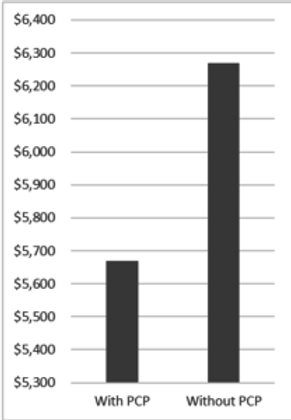Recently, the New York Times published an article that disputed claims that preventative care helped to reduce healthcare costs. At TouchCare, we cite the importance of Primary Care Attribution, often associated with preventive care, as a cost savings tool for our clients.
We took a closer look at some of our own data to prove the correlation between Primary Care Attribution and lower healthcare cost.
In our study, TouchCare found that roughly 11% of the 4,002 studied members had not had a primary care physician (PCP) encounter in the past 14 months.
In this cohort, we found that members without an attributed PCP consumed on average $601 in healthcare per year more than the rest of the population.
Additionally, our analysis provides objective evidence that much of the cost difference is found in the 'rising risk' cohort. 'Rising Risk' individuals are those whose medical spend has recently accelerated into $1,000 - $20,000 per year.
What is Primary Care Attribution?
Primary Care attribution is determining the PCP an individual considers their ‘doctor’ inferred from medical claims. Admittedly, PCP Attribution is not an exact science. It requires a complex set of algorithms to define what primary care physicians (e.g. include or exclude OB/GYN), which providers are PCPs, which claims relate to primary care based on CPT billing codes, and the best attribution when a member has seen multiple PCPs during the year.
We used “PCP-only method” to perform attribution on a cohort of 4,002 plan members located in three service areas. We found 89% of the population had at least one PCP encounter in the prior 14 months and 11% (424) did not. This was much higher than the US average of nearly 75% who indicate having a PCP. We infer the high rate in our study cohort is due to average income and strong engagement with their advocacy program.
Why Does PCP Attribution Matter?
Health Payer Intelligence reported a majority of plans have a "well visit" (a form of preventative care) incentive. Examples such as Minuteman Health, an NH and MA HMO plan offering $50 checks for any member completing a well visit during the plan year, are not uncommon.
One of the most important and overlooked outcomes of a well visit is PCP attribution. Members who previously were not engaged with a PCP often need to find one to perform the well visit. The result? PCP attribution for a member who previously had none.
Research shows individuals with primary care attribution remain in better health and spend less on acute care services. It makes intuitive sense that well visits may catch an emerging chronic condition, perhaps reducing the severity and related costs.
Recently a large-scale project in Rhode Island to expand primary care access and attribution resulted in a 7.2% reduction in acute care admission.
Are you intrigued?
Our next post discusses the impact of the rising risk group, an in-depth analysis of our findings and what you can do about it.









